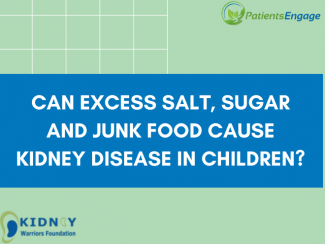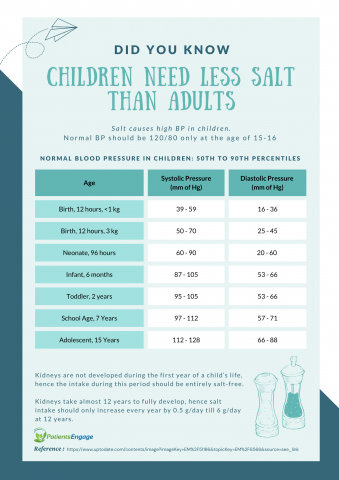
A panel discussion with Dr Rajan Ravichandran and Dr Arun Gupta highlighted the need for better product labeling and regulatory changes around advertising and marketing of processed foods. For parents to be aware of the link of salt, sugar and ultra processed foods with diabetes, hypertension and Chronic Kidney Disease in children. (Video below)
Participants:
Dr Rajan Ravichandran – Senior Nephrologist (RR)
Dr Arun Gupta – Pediatrician (AG)
Aparna Mittal, Founder , PatientsEngage (AM)
AM : Why is excess salt an area of concern
RR : Salt is an extremely important factor that causes not just hypertension but also affects blood vessels , diabetes and could lead to chronic kidney disease (CKD). Due to better diagnostic techniques , it is estimated that 10% of adults have kidney related issues , which emphasizes the importance of controlling excess salt consumption
AM : What are the factors related to salt intake for children
RR : Kidneys are not developed during the first year of a child’s life, hence the intake during this period should be entirely salt-free. Kidneys take almost 12 years to fully develop, hence salt can be increased only by 0.5g/year till 6 g/year at age 12
AM: What are the harmful effects of excess salt on children
RR: a)Salt is a dominant taste in our taste buds. Excess salt intake can cause saturation of taste buds that leads to addiction to excess salt for life b) Causes high BP in children . In most cases children’s BP is not checked . Moreover, the normal adult BP level is 120/80 is not relevant for children whose normal level is more likely to be 80/60 c) Excess salt intake causes depletion of calcium which can affect growth, and also cause kidney stones

AM : What are the hidden sources of Salt
AG : Most commonly consumed packaged consumer products , which are aggressively advertised and marketed , are hidden sources of salt. Instant noodles, canned soups and ready-to-eat foods, most breads and biscuits, pizza are all hidden sources of not just salt, but also sugar and trans fats
AM : What are Ultra Processed Foods (UPF)
AG : This is a term that has come into vogue in the last 10 years or so. Foods can be categorized into 4 types. 1) Natural or unprocessed : Fresh foods like fruits and vegetable, raw grains etc 2) foods with added ingredients like salt to make them tasty 3) Low processed foods 4) Ultra Processed Foods(UPF) that are typically made in factories: use ingredients that are not normally used in a kitchen: use chemicals like additives, preservatives, enhancers, emulsifiers; are aggressively advertised and distributed. UPF are very high in salt, sugar and trans fats, causing obesity, diabetes, cardiac issues, hypertension and Chronic kidney disease

AM : What are some global initiatives to reduce salt
RR : 64 countries have enacted policies and legislation to control salt intake. A critical element in legislation should be to mandate proper food labeling – instead of numbers associated with the ingredients, the product should be color coded to indicated the salt levels – Red for excessive , yellow for medium and Green for acceptable salt levels. Success has been seen in places like Japan where the incidence of stroke has come down significantly. In China they have substituted 25% of the salt with potassium. UK has gradually reduced salt levels in bread over a few years
AM : What is the difference between sodium level and salt level?
RR : This is a common misrepresentation by the packaged food manufacturers. Salt is Sodium chloride not just sodium. 1 g of Sodium is equivalent to 2.5 g of salt. Food Labeling should therefore not indicate Sodium levels but Salt levels. Another idea is to remove Salt shakers from restaurant tables completely, and provided to the diner only upon request
AM : What are the policy changes that would control this problem
AG : The last few decades has seen the huge rise in the sale and consumption of UPF. These should be regulated to have strong warning labels on the package, not just a list of ingredients. The aggressive advertising and marketing of UPF should also be regulated, with limits on advertising for children’s products. Such policy and regulatory changes are required to control the excessive intake, and not just rely on soft messages on diet, health and wellness
Link to the video: Dangers Of Excess Salt, Sugar and Junk Food On Children's Health





